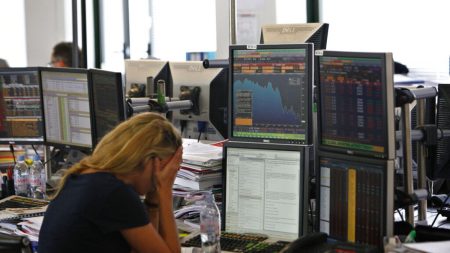The French bond market is experiencing a period of unease, with 10-year bond yields climbing, reflecting growing concerns about the nation’s fiscal health. This stands in contrast to several other Eurozone countries, including Cyprus, Spain, and Croatia, which are perceived as less risky investments despite their history of debt challenges. This shift in market perception underscores a broader transformation in the Eurozone sovereign bond market.
The improved standing of countries like Portugal, Spain, and Greece can be attributed to their commitment to fiscal sustainability, coupled with low inflation and robust economic growth. Many of these countries, particularly those with strong tourism sectors, have experienced significant GDP growth and are now running budget surpluses. This allows them to reduce their overall debt burden, making them more attractive to investors. The shrinking supply of their debt in the market, alongside their strong economic performance, contributes to lower bond yields, even outperforming France. This trend of converging yields towards those of Germany, a benchmark for stability in the Eurozone, is expected to continue if these countries maintain their fiscal discipline.
France’s current predicament stems from ongoing political turmoil and the absence of a finalized budget for 2025. This uncertainty surrounding fiscal policy has unnerved investors, contributing to higher borrowing costs. The country’s projected deficit, exceeding 6% of GDP, necessitates continued borrowing, further increasing its already substantial debt-to-GDP ratio of 112%. This lack of clarity on how France plans to address its fiscal challenges has fueled market volatility and kept yields elevated. While the cost of borrowing hasn’t changed dramatically since late 2023, the underlying concerns persist.
Adding to investor anxiety is the composition of French debt ownership. A significant portion, over 50%, is held by foreign investors. This raises concerns about potential divestment, which would force domestic banks and creditors to absorb more French debt, potentially driving yields even higher. This reliance on external financing adds another layer of vulnerability to France’s financial outlook.
Despite facing its own political uncertainties and an economic contraction, Germany’s bond market remains stable, with 10-year yields significantly lower than France’s. This resilience stems from Germany’s relatively modest debt-to-GDP ratio, substantial fiscal reserves, and high domestic savings. Market confidence in Germany is also buoyed by the anticipation of fiscal stimulus measures from the incoming government, which are expected to support economic recovery. The market focus remains on the upcoming election and the policy proposals of the new government, particularly regarding budgetary measures and potential industrial policies.
Both France and Germany, as large and wealthy economies, possess significant capacity for self-financing through domestic savings and robust financial systems. While both countries face medium-term challenges related to fiscal policy, politics, and growth, their ability to manage their debt burdens remains relatively strong. This inherent economic strength provides a degree of insulation against market volatility, even in the face of political and economic uncertainties. The market recognizes the underlying resilience of these economies, which contributes to their ability to weather these challenges and maintain investor confidence in the long term.














